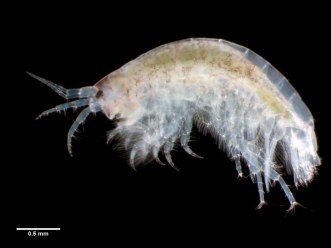The following post is one of a series previewing the research that will be presented at the in Helsinki, Finland (26–30 May 2019).
A guest post by Jana Asselman
Through a significant series of scientific discoveries, we now know that certain aspects or traits will be passed on to our children and grandchildren. Our DNA not only determines the blood type or eye color of the next generations but may also determine their sensitivity or predisposition to certain diseases. Yet, an increasing number of studies has suggested that we pass on much more information to the next generation that we would assume. Indeed, while we all know that exposure to chemicals and other environmental factors can significantly affect us, we often do not realize that we can also pass on these exposure effects to future generations.
The most well-known example is the chemical vinclozin, often used as a fungicide. Researchers have shown that when pregnant mice are exposed to , abnormalities have been observed in the development of offspring. These abnormalities were present for three subsequent generations that were never exposed to vinclozin. Currently, more and more studies are reporting effects of chemicals that can persist in future unexposed generations, often through complex evolutionary and epigenetic processes. Yet, how can we protect future generations from past ancestral exposure?
Current environmental and human health regulations primarily focus on the effects of the actual exposed individual and do not account for future effects. Furthermore, there is no standardized approach to evaluate the potential epigenetic or evolutionary effects chemicals may have on future generations. At the SETAC Helsinki meeting, the session on “Epigenetic and evolutionary effects of environmental stressors in environmental and human health” will discuss this topic.

Amphipod02 – Critters from the Coorong, plate produced for David Paton’s book “At the End of the River.” Courtesy of dr.scott.mills (flickr) CC-BY-SA 2.0
New studies will be presented highlighting the evolutionary and epigenetic effects in a wide set of organisms including springtails, worms, flies, waterfleas, fish, amphipods, and plants, covering both aquatic and terrestrial ecosystems. The presentations and posters will also discuss different methods to study and evaluate these effects from conventional life-history experiments to state-of-the-art DNA sequencing and analytical technologies.
Presenters will engage a broad audience from academia, government, and industry interested in discussing the latest research on this topic and discuss how we can implement this in regulation. What gaps still need to be addressed? What are crucial aspects to be addressed within this topic? Hopefully during this SETAC session, we can get a new perspective on how to better protect future generations from their ancestors’ past.
: “Epigenetic and evolutionary effects of environmental stressors in environmental and human health”
28 May 2019 | 13:55 – 15:30 | Room 208 | Posters TU146 – TU159
SETAC Helsinki Attendees who are further interested in the topic can also join the Omics Interest Group meeting, where the take home messages of this session will be further discussed
29 May 2019 | 16.15 – 17.15 |Room 215
Additionally, for those who cannot attend SETAC Helsinki, a similar session titled “Epigenetics and Environmental Exposures: Mechanisms and Effects from Invertebrates to Fishes” is currently for the in November.
